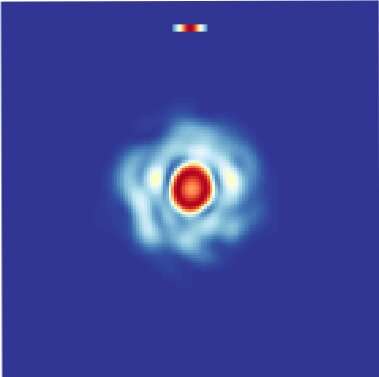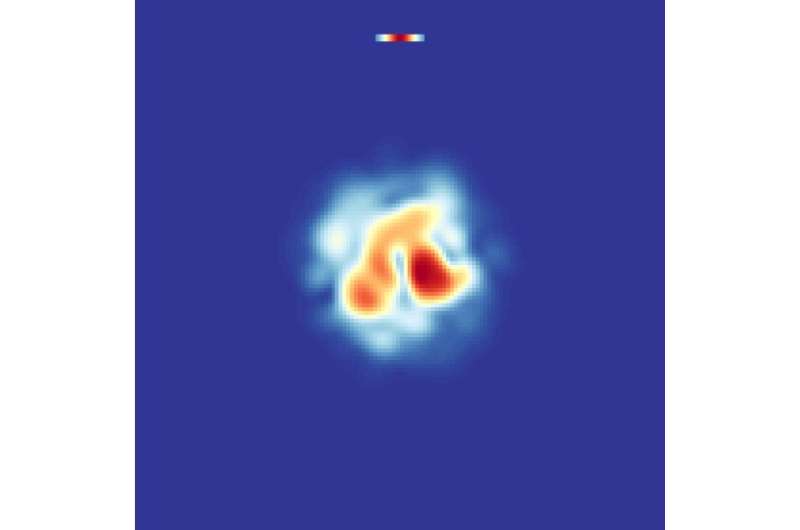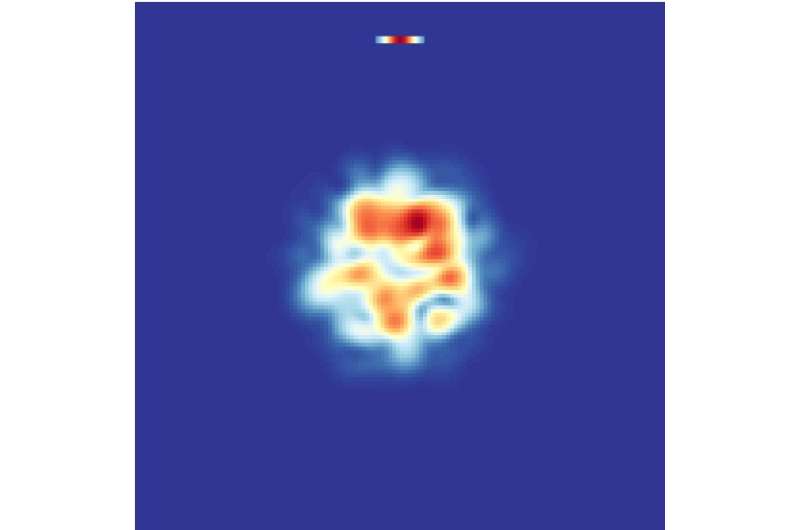March 4, 2020 feature
A theoretical approach to understand the mechanisms of 3-D spatiotemporal mode-locking

Laser technology confines light inside a resonator containing a gain medium, a material with quantum properties that can amplify light. As laser resonators are generally far larger than the wavelength of light, lasing inside their cavities can occur in a wide range of patterns, which are known as modes.
Past physics studies have found that possible lasing patterns (i.e., modes, or combinations of modes) compete with one another for energy and that the laser then selects the pattern that minimizes the loss of energy. This 'selection process' could be loosely compared to natural selection as described in Darwin's theory of evolution, where the members of a species that adapt best to their environment tend to survive and produce more offspring. Similarly, the patterns of lasing (i.e., modes) that make the best use of their energy resources end up dominating the others.
Shortly after lasers were invented, physicists started realizing that this 'competition' between modes can be controlled in a way that causes the technology to produce remarkably short pulses, a phenomenon that is now known as mode-locking. This synchronization phenomenon involves many of the laser's modes oscillating together, forming pulses of several femtoseconds (10-15 ss).
Mode-locking takes place when laser designers introduce an element into the laser's cavity that enforces that the lasing pattern that uses energy more efficiently turns into the pattern that maximizes the peak intensity of the laser's electric field. This pattern turns out to be one in which many modes lase simultaneously with a synchronized phase. Since its discovery, mode-locking has been exploited in many devices, including high-field optics and frequency combs.
So far, this synchronization phenomenon has almost always been described as the self-organization of light in a single dimension, that of time. Nonetheless, it could also potentially be understood as a three-dimensional phenomenon, manifesting itself in both time and space.
Researchers at Cornell University, working with a team of external collaborators, have recently introduced a theoretical approach that could help to gain a better understanding of 3-D spatiotemporal mode-locking. Their theory, presented in a paper published in Nature Physics, builds on a series of observations gathered in their previous studies.

"In 2017, I discovered that mode-locking was far more general than was appreciated before," Dr. Logan G. Wright, one of the researchers who carried out the study, told Phys.org. "Rather than being possible only in very constrained laser designs, I found that mode-locking could occur even in 'bad' laser cavities with many complicated modes. This general mode-locking process is called spatiotemporal mode-locking."
Dr. Wright's observation of spatiotemporal mode-locking surprised many researchers within the physics community, as it suggested that most previous theories about the phenomenon were oversimplified. His work essentially revealed that laser physics may be far more 'creative' than what most physicists expected.
"In this new study, we wanted to understand just how adaptive the laser could be in finding complicated solutions to this optimization problem and if there was a more general way to understand how lasers solve this problem," Dr. Wright said. "In other words, is it still just making the best use of energy or is there more going on?"
Dr. Wright and his colleagues came up with a new theoretical approach called 'attractor dissector," which could help to better understand how the spatiotemporal mode-locking phenomenon reported in their previous work can lead to a "Darwinian'-like selection among lasing patterns. After verifying their theory by collecting detailed measurements, the researchers showed that the fairly complex patterns of light enabled by spatiotemporal mode-locking can generally be reconciled with the modes' selection pressure and their need to use energy efficiently.
"In short, we took a rigorous mathematical description of the laser and considered it as an optimization problem that the laser is trying to solve," Dr. Wright explained. "This mathematical description is ridiculously complicated to deal with in general, but in extreme cases, we were able to reduce the optimization problem to the optimization of a single variable. At least in these cases, we could show that the laser seems to be working to maximize energy efficiency."
The theory proposed by Dr. Wright and his colleagues provides a model for each of the different types of 3-D pulses they observed in spatiotemporal mode-locking. This can in turn help to identify the intracavity effects responsible for their formation and stability.

Overall, the findings gathered by Dr. Wright and his colleagues are aligned with the previous understanding of mode-locking, yet they suggest that the phenomenon can be of a far more creative and complex nature than what was initially thought. The researchers also showed that previous intuitions regarding mode-locking do not always hold, particularly when a problem is very complex.
"Multimode lasers may be a place where experimentalists can study self-organization and Darwinian-like competition in settings that are very complex (far beyond what can be simulated on conventional computers), but that nonetheless can be controlled (unlike most populations of animals in nature, for example)," Wright said. "Thus, they may be a good place for physicists to understand how natural complex systems self-organize."
Using their theoretical approach, Dr. Wright and his colleagues were able to identify several different types of 3-D spatiotemporal mode-locking, all of which have no analogues in a single dimension. Their results could thus help to uncover more complex forms of coherent light, which may have important implications for both research and technological development.
"Lasers have been monumentally important in enabling scientists to push frontiers of measurement and experimentation: in physics and chemistry, most Nobel prizes rely on a measurement or experimental technique that has been enabled by a particular laser capability," Dr. Wright said. "So while we can't be too specific yet, we are excited about what new laser capabilities may ultimately enable for scientific (and industrial) applications."
By explaining how laser technology works in complex regimes, the approach and observations presented by Dr. Wright and his colleagues could pave the way to the development of new types of lasers with different capabilities and features. The researchers' theory could also improve the current understanding of how complex physics amounts to natural optimization, potentially informing the design of new optimization and artificial intelligence algorithms.
"At NTT Research, in the Physics and Informatics Laboratory, I am now working to understand how natural physical systems perform computations and how we can harness these computations," Wright said. "Within this goal, the multimode laser's ability to solve complex optimization problems makes it a prime experimental system, and we are actively working to design related optical machines that harness this capability to perform simulations and to solve complex combinatorial problems. An important step that I am currently focusing on entails trying to understand the possible role that quantum effects can have on natural computations."
More information: Logan G. Wright et al. Mechanisms of spatiotemporal mode-locking, Nature Physics (2020). DOI: 10.1038/s41567-020-0784-1
Logan G. Wright et al. Spatiotemporal mode-locking in multimode fiber lasers, Science (2017). DOI: 10.1126/science.aao0831
Journal information: Nature Physics , Science
© 2020 Science X Network




















